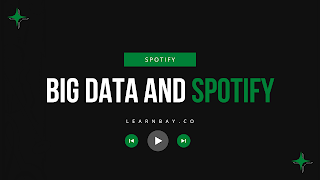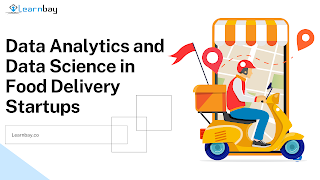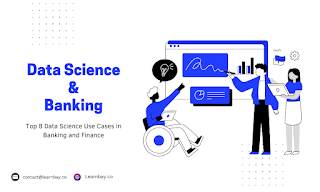How Spotify Is Improving User Experience Using Big Data
Millions of customers every day enjoy and utilize the popular music streaming service Spotify. As you might know, the app is the largest on-demand music service in the world and is extremely famous in the music industry. It is all made possible by Big data.
With a current net value of over $25 billion, Spotify significantly impacts the music sector by utilizing data in new ways. Using big data analytics, Spotify can automatically construct playlists based on user preferences and add a personalized touch.
The business wants to be totally data-driven and allow people to base decisions on data. Spotify can swiftly develop new products or services to capitalize on emerging user patterns by collecting and analyzing vast amounts of listener data. Big Data is, therefore, crucial for the organization to innovate and prosper. But how does Spotify use Big Data to improve the user experience? This is the issue that emerges.
Importance of Big Data in Spotify:
As we have said, Spotify is at the top because of big data analytics. People use Spotify due to its sizable playlist and weekly discovery recommendation. The software presents users with various songs and musical genres that appeal to their likes; eventually, this encourages users to utilize the app more frequently. Data Science implements its algorithms to get data-driven insights and enhance consumer experiences. It has generated over 600 TB of data per day.
Additionally, Spotify continually searches the web for blog entries and other relevant text and music. The app wants users to enjoy music and learn more about the songs and musicians they love. Spotify uses big data to evaluate and provide lists of the top songs, current trending songs, and many other things. It keeps the audience engaged and encourages longer Spotify sessions. After considering it, Spotify made a decision and continued to inform interested consumers.
How does Spotify gather the data?
Spotify employs a variety of scripting languages and software, including Java, HiveHive, Apache Kafka, and others, to gather data. (Refer to the data analytics course in Bangalore to learn more about these tools). These are the main reasons that Spotify uses big data analytics to get reliable results. User Interference in the Spotify mobile app has grown to be a critical component of machine learning.
Playlists, information, and personal history are the three main uses of the data. It enables Spotify to analyze user behavior by collecting data for everybody. They will learn the structure and details of the song from it. They are able to create a suggestion for the users using this. The history will display their search terms, the music they've often been playing, the artist or song they avoid or skip, their favorite and least favorite albums, and much more.
The evidence supporting each of the claims above is content-skeptical, but using neural networks, predict such information from the audio signal. Later, the algorithms created by data science develop a sense of self and know what to do next and what has to be changed.
Additionally, artificial intelligence aids in enhancing Spotify's functionality. It applies a wide range of collaborative filtering approaches; using this technique, a pattern in the data has been found. Additionally, it offers potential representations of each user as well as each musician or song. As a result, Spotify has access to a wide variety of music. Additionally, customers may listen to music just in certain parts of that plan since comparable songs are grouped together using Big Data in this region of Spotify.
Spotify improving user experience
Spotify strives to choose a large portion of the data provided to enhance the user experience for its users. With this information, the app can better target its users and create ads with more engaging copy.
The platform has carried it out by examining the data they have collected about its listeners and used those insights to produce advertising that carefully directs the platform's target audience.
With Spotify, you can watch movies, listen to podcasts, and much more besides music. They provide a vast selection of music so customers can find new, fashionable tunes and timeless old music. They can even share it with someone, post it on social media, and use other services. The more people who hear the song, artist, or album, the more people will download the app.
Big Data embraced the information consumers desire to listen to and customized advertising efforts. The target audience and potential users are reached via user interaction. The incident started the practice of direct and response advertisements, which are now used to promote the program. Big Data in Spotify assists in data collection for holiday marketing, which will aid in promoting and encouraging positive user experiences.
Predicting the next effective move
Big Data is used by Spotify to engage consumers outside of music streaming apps, as well as to provide tailored services and support. Big data is used in the app's entertaining activities. Spotify never passes up an opportunity to promote itself, from television advertisements to social media campaigns.
Spotify may use the little details provided by the data science forecast to help with decision-making. It's accurate to claim that they developed a plan using information obtained via Big Data Analytics. Although the prognosis could not be entirely precise, it is close enough to acquire a significant conclusion.
The majority of Spotify customers, who generated 456 million in income in Q3 2022, are said to be under 35.
Conclusion
So that is how Spotify utilizes Big Data. Big Data and Artificial Intelligence are reshaping the music industry in every manner, not just through one music streaming software. It creates innovative techniques and improves the user experience. The whole sector will soon use Big Data to expand firms. So it's high time to start upskilling yourself with the rigorous data science course in Bangalore, crafted for aspiring professionals.




Comments
Post a Comment